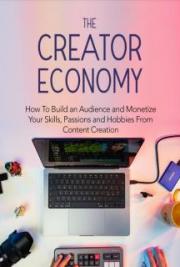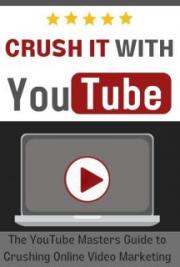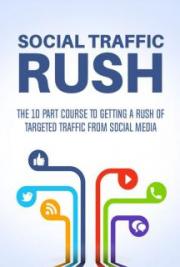
Social Networking, the “Third Place,” and the Evolution of Communication
The New Media Consortium’s Series of Online Conferences is designed to explore emerging topics in education and technology, using current communication technologies to bring people together online in a way that offers many of the same affordances of a face-to-face conference. Of particular importance are opportunities for the kinds of social interactions that make in-person conferences so valuable: hallway conversations, end-of-the-day informal gatherings, opportunities to speak with presenters in between sessions, and highly interactive breakout sessions that invite participation from the audience.
As part of a new approach to how we design our online conferences, this paper is being released in advance of the NMC Online Conference on the Evolution of Communication to spark discussion, discourse, and especially critical thinking on the topic. This first topical paper is being released in a form that encourages discussion and that itself embodies the topic of the changing nature of communication. The conference itself, to be held December 4-5, 2007, will take place in the virtual world of Second Life and will incorporate some of the tools and trends identified here.
_____________________________
The purpose of this white paper is to put forth a proposition that we hope will generate considerable conversation. The premise is simple, but touches on concepts and ideas that are well established within the academy, and as such, it is a topic about which there may be some strongly held perspectives. Our premise is that technology has not only mediated communication in countless ways, but that the very ways we communicate—and even the ways we talk and think about communication—are changing as a result.
Part of this premise is backward looking, in the sense that if we set literature and the creative side of communication aside for a moment, the formal communication strategies we have been taught in schools were often focused on how to convey lots of ideas or information (at relatively infrequent intervals) and generally in the form of written papers (like this one), books, or compilations.
Added to and fueling the premise is an admittedly unscientific assessment of how we have added to those forms in recent years. A look in almost any direction will reveal patterns of communication very different than the traditional writing in which we were trained. Small bursts of information, technology-mediated for the most part, permeate our experiences, and increasingly we have people with whom we are in contact almost constantly—and more so every day, these people are scattered across the globe.
Mediated by new tools and new technologies that have made the marginal cost of long distance communication essentially free, both work and social activities are commonly shared by groups of people who need not be geographically near each other to be close. Our premise, simply put, is that these and similar trends represent a significant shift in the way we interact with others and in the way we understand the nature of those interactions.
This paper is not intended to be a lexicon of terms and definitions. Rather, its focus is to consider the ways that communication is changing and raise the question of how this shift can be applied to teaching, learning and creativity. It is our hope that this paper will
© 2007, The New Media Consortium; released under a Creative Commons Attribution- Share Alike 3.0 United States License.
For details please see http://creativecommons.org/licenses/by-sa/3.0/us/
NMC White Paper
Page 2
encourage conversation, thinking, projects, and demonstrations that will enrich the Online Conference on the Evolution of Communication, and that the dialog begun here will continue beyond the conference.
Communication is (Still) Changing
The nature of communication has undergone a substantial change in the past 20 years—and the change is not over. Email has had a profound effect on the way people keep in touch.
Communications are shorter and more frequent than when letters were the norm; response time has greatly diminished; we are even surprised if someone we wish to contact does not have an email address. Although there are still a few people who print out their emails in order to read and respond to them, most of us are accustomed to the daily duty of reading and answering emails that have arrived since we turned off the computer the night before, and to keeping up with them as they trickle (or flood) in during the day.
Even as we have gotten used to email, though, the nature of communication continues to change. Instant messaging has created another method of interaction, one where the length of messages is shorter and the style of the interaction is more conversational—but where it is acceptable and common to pay partial attention. Broadcast technologies like Twitter transform these short bursts of communication from one-on-one conversations to little news (or trivia) programs: we can “tune in” when we want an update or have something to say, and
“channel surf” to other activities in between updates.
The expectations we place on those we communicate with vary from medium to medium, as has always been the case. Sending a letter through the postal mail sets up an expectation of a response that will come in days; email, in hours; instant messaging, in minutes. We expect the letter-writer to devote a certain amount of time and attention to responding. With email, the expected time investment is smaller. With instant messaging, we understand that the other party’s attention may wander between messages in some cases and remain focused on us, as with a phone call, in others.
New environments like virtual worlds present additional opportunities and challenges for communication. In such settings, there is a visual component to the online interaction that is lacking in email or instant messaging: we can see a “body” that goes with the voice or text conversation. Affordances like this can help foster a feeling of presence and give us clues about when the other person is listening, when he or she wishes to speak, and when his or her attention is directed elsewhere. This is not to say that these environments offer the same contextual cues as face-to-face communication—they do not; but there is an added dimension to interactions in these spaces that does not occur in other online contexts.
Online communication tools also have the potential to increase our awareness of the movements of our professional or social contacts. Twitter, for instance, offers an at-a-glance update of things people we know happen to be doing: who is outside cleaning their gutters, who is writing a new blog post, who is about to have lunch with a friend. Clive Thompson (2007) calls this phenomenon social proprioception, named after the physical quality of proprioception that tells a creature where its extremities are by the reception of stimuli produced within the organism. Social proprioception tells us where the nodes of our community are and provides a sense of connectedness to and awareness of others without
© 2007, The New Media Consortium; released under a Creative Commons Attribution- Share Alike 3.0 United States License.
For details please see http://creativecommons.org/licenses/by-sa/3.0/us/
NMC White Paper
Page 3
direct communication. Technologies like Twitter enable us to have this sense even when the members of our community are not within sight.
The Contexts of Online Communication
The context in which an interaction occurs has a profound effect on communication. In face-to-face encounters, factors ranging from psychological to environmental to cultural all have an effect on how the message is transmitted and how it is understood. Online communication is no less subject to context, and may bring with it additional contextual issues that will have an effect on the intended message.
The type of technology being used to facilitate the interaction, for example, has a bearing on the environmental context of the conversation. A conversation taking place through instant messaging in between meetings will have a different flavor than if the same topic were discussed in a virtual world, on the phone, or in an online meeting room.
The challenge of any communication, that of being understood, exists online as much as—
maybe more so than—offline. Posts on threaded discussion forums and instant message communications are notoriously hard to decode correctly because of the lack of nuance. As more people participate in these kinds of communications, signals that were developed to add context to text-based messages, like smileys (☺) and tags (like <rant> </rant>), are slipping into the mainstream. The issue of context is far from solved, though, and continues to surface with each new mode of communication that emerges.
The Internet is the Place
The vehicle for these changes is the Internet. Increasingly, it is the “third place” (the first and second places being home and work) where people connect with friends, watch television, listen to music, build a sense of togetherness with people across the world, and provide expressions of ourselves which are themselves forms of communication. As more people turn to the Internet for professional and social purposes, we are seeing new means of communication, new places to communicate, and new avenues of interaction unfold at a rapid pace.
New means of communication. Internet calling services like Skype or Yahoo! Voice turn a computer, a webcam and a headset into a video phone. Blogs, while not new, have grown in usage over the last few years and are now a common way for many people to communicate their ideas to a broad audience and, in most cases, to hear back from that audience. Both Internet calling and blogs are relatively easy to accept, because they are based on understood models (telephones and magazine columns).
It is more difficult to grasp the potential implications of forms that are not modeled on a comfortable, twentieth-century mode of communication. One such example is Twitter: Twitter users post short messages that usually have to do with whatever is happening to them at the time—whether it is intellectual, practical, social, or professional in nature—to create an ongoing log of activity across a community at the minute-by-minute level. Twitter is
© 2007, The New Media Consortium; released under a Creative Commons Attribution- Share Alike 3.0 United States License.
For details please see http://creativecommons.org/licenses/by-sa/3.0/us/
NMC White Paper
Page 4
controversial precisely because it does not have an elder analog; it is a cousin of instant messaging, but its broadcast nature marks it as a different type of communication. Twitter has been described as fun, trivial, innovative, addictive, a waste of time, and potentially a powerful social networking tool; but its implications for teaching, learning and creative expression, if any, are not yet fully understood.
New places to communicate. Increasingly, a computer with an Internet connection is the locus of a range of interactions in a variety of media and a gateway to an array of social spaces for work and play. Social networking sites like Facebook and MySpace and virtual environments like Second Life and World of Warcraft have become online meeting spaces where users—
members, residents, or players—can interact and express themselves. These spaces give people a way to represent themselves (a profile or an avatar or both) and various means of communication ranging from text and voice chat to public message boards and/or private messaging. They offer a way to keep in touch with existing communities that users belong to offline, such as social and professional groups. They also make it possible for people who would not normally communicate more than a few times a year to keep in touch—colleagues met at conferences, for instance, or friends met through the online community itself.
Sites like YouTube and Flickr represent another forum for online communication that is centered around sharing, preference, and popular culture. Visitors can browse movies (in the case of YouTube) or photos (in the case of Flickr), express personal preferences, add commentary, and upload their own creative work. YouTube is also a repository of popular culture in the form of newscasts, television shows, movies, or music videos that are of current interest. The kinds of interaction that occur on these sites center around shared interests and include not only verbal commentary, but commentary in the form of original or derivative works based on popular pieces.
These online spaces draw people—and can keep people—in numbers. Facebook claims 45
million active users, nearly half of whom are associated with an educational institution; Second Life lists over a million logins in the past two months, with between forty and fifty thousand people online at any given time; World of Warcraft has over 8 million active subscribers worldwide. YouTube serves over 100 million videos per day. In a recent NMC
survey of educators using Second Life, 49% reported that time spent in Second Life has replaced their TV time, indicating that some online activities are compelling enough to displace traditional leisure time activities.
One of the reasons people return to places like these is because of the interactions they can have there, both social and professional. Whether it is as simple as checking back to see what other comments have been added to yours or as involved as attending a workshop or presentation in a virtual world, the nature of the attraction lies in the connections between people that these online spaces afford.
New avenues of interaction. Online communication channels reduce the distance between people and allow interactions to happen more quickly than they might otherwise.
Communication with distant colleagues, relatives and friends is shortened from weeks to minutes and can even be instant, allowing us to maintain stronger ties to a wider group of people than ever before. At the same time, tools like Facebook and LinkedIn help to relieve the additional social burden of these ties by making it easy to keep track of contacts and keep a record of when we last “touched” them.
© 2007, The New Media Consortium; released under a Creative Commons Attribution- Share Alike 3.0 United States License.
For details please see http://creativecommons.org/licenses/by-sa/3.0/us/
NMC White Paper
Page 5
Online forms of communication also incorporate modes of contact missing from more traditional means of interaction at a distance. Communications that would once have been text-only or voice-only are now much richer, weaving together text, voice, body language, and even shared experiences. Many of us are still learning how to process these cues while receiving and transmitting them through the medium of a computer, a challenge that can make effective communication difficult; but for many young people, for whom these technologies have always existed, interpreting and interacting this way is already second nature.
Perhaps one of the most difficult aspects of online communication channels is that they are not exclusive. It’s possible to create a blog post, Twitter about it, send an instant message to a colleague and get on a Skype call with someone else almost at the same time. Moving back and forth between these and other channels is quick and easy. The choice of medium depends on the person (or people) we want to reach, the length and nature of the message, and the amount of time we want to spend in the interaction; but the ability to flow between them is becoming more seamless by the day. The ease of transitioning from one to the other technologically can be at odds with the desire for a deep, sustained interaction.
Questions for Consideration
The evolution of communication raises questions about the nature of interpersonal interactions, the attractions and pitfalls of online communication, and the potential loss of traditional modes of contact. We invite you to consider these questions—and to pose your own—as you think about the changing nature of communication:
Is the nature of the way people relate to each other actually undergoing a change because of online communication? Or is interpersonal communication still essentially the same, with online modes of communication simply offering new opportunities for us to communicate (and mis communicate)?
Why is online communication even appealing? What makes people interested in the kinds of interaction that take place on Facebook, or in Second Life, or over Skype or Twitter? Why do people go online and talk to each other instead of doing something else, like cooking or watching television or skiing?
What aspects of twentieth-century communication are replaced, and what is newly available because of online communication? Is anything lost as a result?
How is the nature of communication likely to change in the near future—or is it? What is the difference in the effect or use of online communication on older generations versus younger ones?
The phenomenon described here is ongoing, and it is our hope that this conversation will include reflection on the current shape of online communication as well as speculation and thoughtful conjecture about the future.
© 2007, The New Media Consortium; released under a Creative Commons Attribution- Share Alike 3.0 United States License.
For details please see http://creativecommons.org/licenses/by-sa/3.0/us/
NMC White Paper
Page 6
The Online Conference on the Evolution of Communication
On December 4-5, 2007, the New Media Consortium will convene an online conversation about the evolution of communication. This event is the tenth in the ongoing series of specially focused online gatherings that explore new ideas and issues related to technology and learning.
The NMC Series of Online Conferences is itself an exploration of emerging forms of collaboration and tools, and this particular conference incorporates the theme of new scholarship with the release of Social Networking, the “Third Place,” and the Evolution of Communication in a form that encourages dialog and discussion.
Please see www.nmc.org/evolution-communication for full details.
The Online Conference on the Evolution of Communication is designed to encourage an examination of the ways communication is changing and to further explore both the positive and negative effects on learning, social interaction, creative self-expression, and more.
The conference will be conducted entirely online in the virtual world of Second Life. Sessions, which will be conducted live, can incorporate a variety of visuals and rich media, and are generally about 45 minutes in length, with about one-third to one-half that time devoted to dialog with participants using in-world voice chat.
Additional information about the conference can be found at www.nmc.org/events/2007-
fall-online-conference.
© 2007, The New Media Consortium; released under a Creative Commons Attribution- Share Alike 3.0 United States License.
For details please see http://creativecommons.org/licenses/by-sa/3.0/us/
NMC White Paper
Page 7
Further Reading
The Continuum of Online Communication
Dan Saffer, Adaptive Path, May 21, 2007
Saffer’s brief blog post describes online communication as a continuum from the dictational to conversational and places several communication technologies along the line.
www.adaptivepath.com/blog/2007/05/21/the-continuum-of-online-communication/
Clive Thompson on How Twitter Creates a Social Sixth Sense
Clive Thompson, Wired Magazine: Issue 15.07, June 26, 2007
In this post, Thompson describes Twitter as providing “social proprioception,” helping a group of people develop a sense of itself as an entity.
www.wired.com/techbiz/media/magazine/15-07/st_thompson
Evolution of Communication: From Email to Twitter and Beyond
Alex Iskold, Read/WriteWeb, May 30, 2007
Iskold discusses the way communication is changing, maps current technologies to the forms of communication they resemble (and replace), and poses questions about possible future forms.
www.readwriteweb.com/archives/evolution_of_communication.php
Del.icio.us Resources
Add your own resources on this topic, and see what others have contributed. The tag is nmcscan07.
del.icio.us/tag/nmcscan07
How to Stop Worrying and Learn to Love the Internet
Douglas Adams, The Sunday Times, August 29, 1999.
Although this short piece is almost a decade old, Adams’ observations on the nature of technology and communication continue to be apt.
www.douglasadams.com/dna/19990901-00-a.html
The Internet as Third Place
Fred Gooltz, Advomatic, retrieved October 11, 2007
Gooltz reflects on the qualities that make an ideal public space and observes that for young people, these spaces may well exist online.
www.advomatic.com/thirdplace
© 2007, The New Media Consortium; released under a Creative Commons Attribution- Share Alike 3.0 United States License.
For details please see http://creativecommons.org/licenses/by-sa/3.0/us/
NMC White Paper
Page 8
Technologies Mentioned in the Text
Blogs (a sampling of popular blog services includes www.typepad.com, www.wordpress.com,
www.blogger.com, and www.livejournal.com) are a form of online journal. A blog can have a single author or several. Most blogs allow readers to post comments in response to an article or post, but some do not.
Bloglines (www.bloglines.com) is an RSS reader, or a service that collects updates from your
favorite blogs so you can read them in one place.
Facebook (www.facebook.com) is a social networking site where users can set up a profile, create formal connections to people they know, communicate, and share preferences and interests. Facebook’s fastest-growing demographic is users over 25.
Flickr (www.flickr.com) is an online photo site. Users upload photos; public photos may be viewed and commented on by others.
LinkedIn (www.linkedin.com) is a social networking site where users can set up a profile,
create formal connections to people they know, communicate, and share preferences and interests.
MySpace (www.myspace.com) is a social networking site where users can set up a profile, create formal connections to people they know, communicate, and share preferences and interests.
Second Life (www.secondlife.com) is a 3-D virtual environment created by Linden Lab.
Residents create an avatar and may own land, build and create objects and clothing, and interact with each other in the setting of a user-created virtual world complete with its own economy.
Skype (www.skype.com) is an Internet calling service that enables two-party audio and video chat and multi-party audioconferencing. Skype can make computer-to-computer calls as well as computer-to-phone calls (land- or mobile phones).
Twitter (www.twitter.com) is a cross between instant messaging and blogging that allows a
user to send a short (140-character) update. Users can also follow the updates of selected friends.
World of Warcraft (www.worldofwarcraft.com) is a massively multiplayer online game
created by Blizzard Entertainment. The game takes place in a 3-D virtual world; players interact with hundreds of








